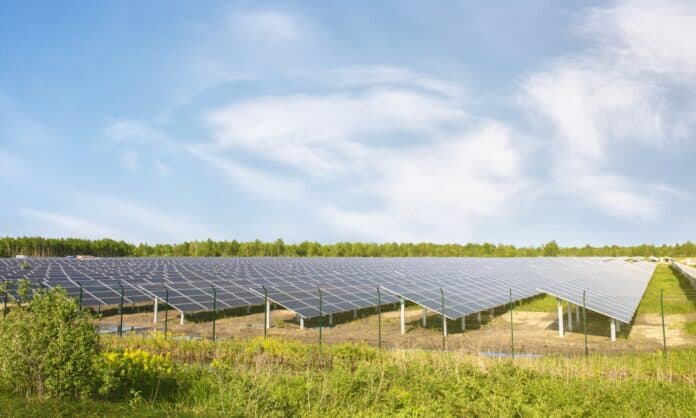Table of Contents
Solar farms, also called photovoltaic power stations, come in many sizes, from small-scale community farms to massive utility-scale farms that supply enough electricity to run tens of thousands of homes and businesses.
Due to the impacts of climate change, the abundant sunshine we have in Australia, and some great government incentives, these are becoming increasingly popular among homeowners and investors alike.
Let’s dive in and learn everything you need to know.
What Is a Solar Farm?
Photovoltaic power stations are extensive collections of solar panels (photovoltaics) mounted either on the ground or on roofs throughout a community. The photovoltaic cells create clean and green solar energy with zero greenhouse gas emissions. The electricity is then sent to nearby homes and businesses.

Types of Solar Farms
There are two main categories of photovoltaic power stations that depend on size. Utility-scale or large-scale farms are large to massive and connect to an electrical grid that supplies electricity to thousands or tens of thousands of homes and businesses. They produce energy in hundreds of kilowatts to thousands of megawatts.
On the other hand, community-scale farms are much smaller and more local. They supply renewable energy up to about 5MW to a community of homes and businesses that install
products like EcoFlow’s Rigid Solar Panels on rooftops throughout the community.
Community-scale farms are less likely to lose power when the grid goes down because they’re located where the energy is used. If you want the complete energy independence that installing photovoltaics on your home offers, you may even be eligible for the Australian Solar Rebate to help reduce your costs.
For example, installing EcoFlow 400W Rigid Solar Panels along with an EcoFlow DELTA 2 Max expandable portable power station can produce and store enough electricity to help you never rely on grid power again. If space is an issue, consider EcoFlow 100W Rigid Solar Panels for a convenient yet powerful solution.
While independent, you can still connect your photovoltaics to the community grid and benefit from selling your excess energy through the Feed-In-Tariff system.
How Does a Solar Farm Work?
Photovoltaic power stations require installing photovoltaic panels on land or roofs and then connecting them to the local or regional electrical grid.
Incoming radiation from the Sun in the form of photons is collected by photovoltaic panels, releasing electrons and converting them into DC (direct current) electricity.
Next, the one-directional DC electricity flows into an inverter and is converted into AC (alternating current) electricity fed into the electrical grid. From there, the AC electricity enters homes and businesses to power lights, devices, and appliances.
What Are the Benefits of Solar Farms?
Here are some of the many benefits photovoltaic power stations provide.
- Clean, green electricity generates no greenhouse gases like carbon dioxide and produces no toxic pollutants like nuclear power.
- The energy source is limitless and free.
- They can be installed on land considered unproductive and unsuitable for agriculture; therefore, they won’t compete with valuable farmland.
- They can be combined with farming, called agrivoltaics, where the panels are placed on agricultural land and provide shade for crops or livestock. This is especially beneficial in hot and dry climates, protecting plants and livestock from the scorching sun.
- Energy is typically produced locally, leading to less long-distance infrastructure needs and less energy losses in transmission.
- The more local it is, the less likely you will be affected by power outages.
What Is a Community Solar Farm?
A community farm is an alternative to utility-scale photovoltaic power stations where urban dwellings have photovoltaic panels installed on their roofs. The benefit of these is that with enough participants, it allows homes within 2000m to connect to the system and enjoy 100% renewable energy without needing to install panels themselves or invest in any infrastructure.
They work through net metering, so those homes with panels installed receive discounts on their electricity bill and may even get paid for the excess energy they produce. Those without panels still have to pay for their electricity like they usually do but benefit from using clean, renewable energy.
Frequently Asked Questions
Photovoltaic farms can be very profitable in Australia because of the abundant sunshine, available land, government incentives, low maintenance costs, and stable revenue from the sale of the electricity they generate.
Final Thoughts
Solar farms come in different sizes, from large-scale utility farms supplying power for tens of thousands of homes to small-scale community farms on rooftops, supplying energy for a community. No matter the size, they provide the benefits of clean, green, limitless energy from the Sun that does not contribute to climate change, create pollution, or compete with otherwise valuable land since they can be installed anywhere.
With recent technological advances, increasingly affordable equipment, and government incentives, EcoFlow’s Solar Panels have never been more appealing. Explore our collection today to experience energy independence.


